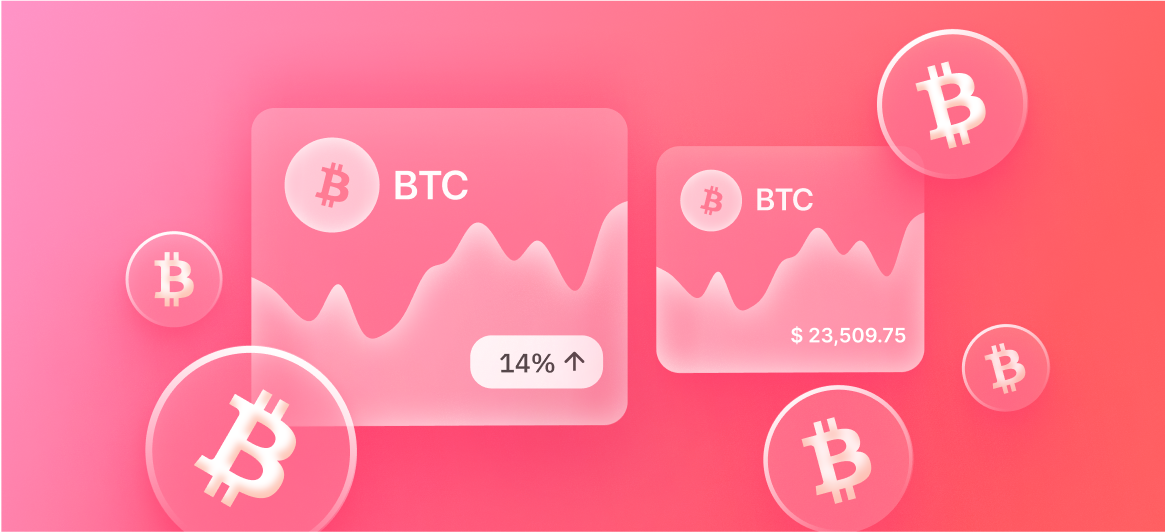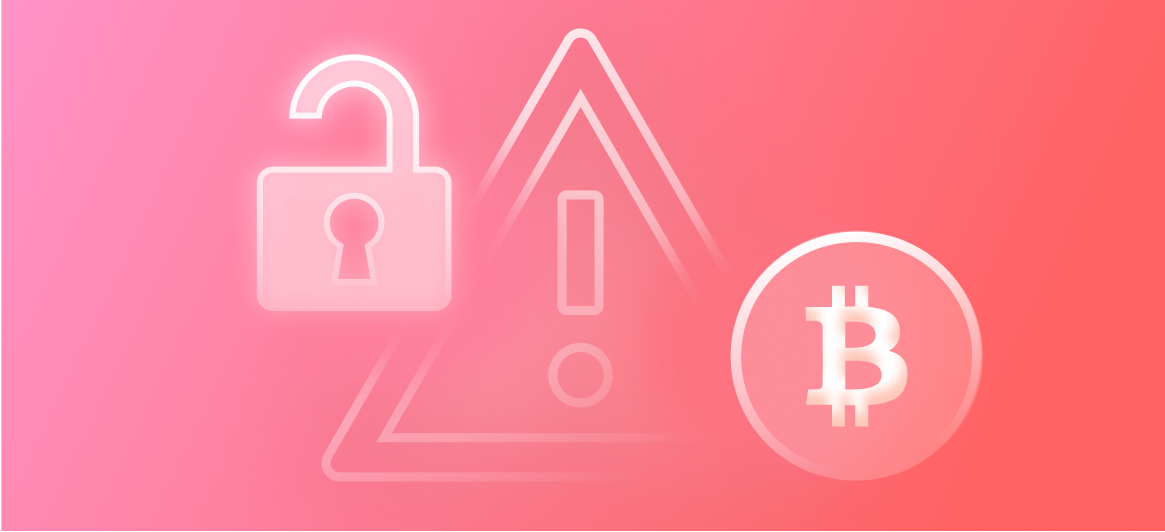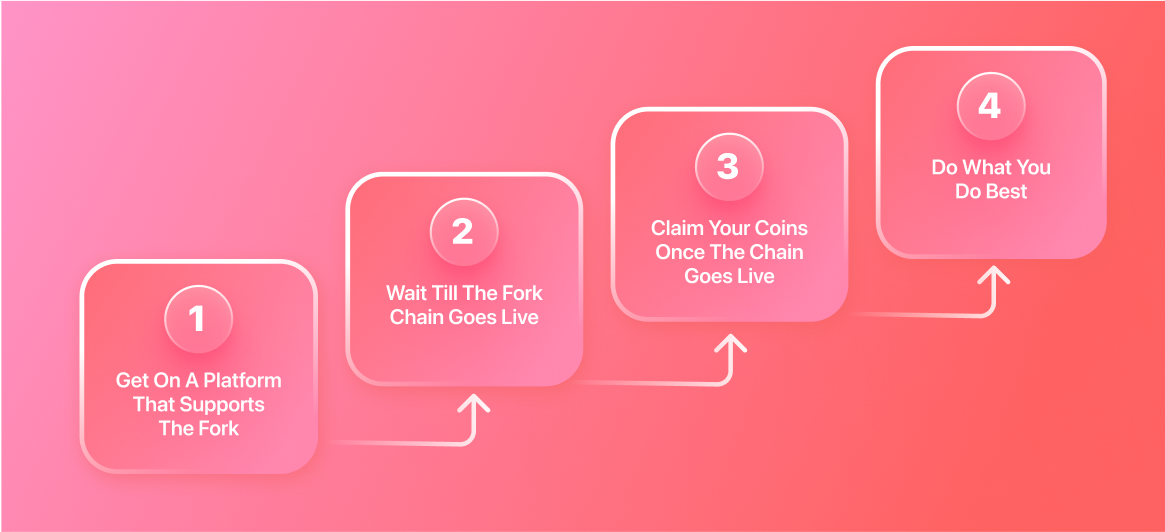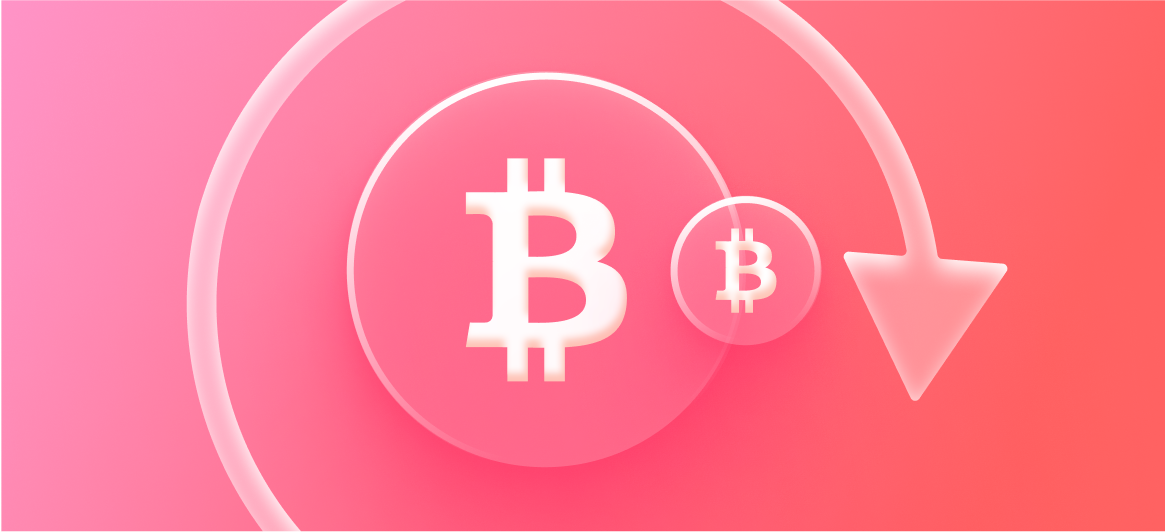What is Bitcoin Fork and When Will Be The Next One?
It will be tough to discuss the history of cryptocurrency and not mention Satoshi Nakamoto as the software developer who pioneered the software program for Bitcoin. He developed the cryptocurrency in 2009, making it the first to come on board, and has since inspired the development of multiple other digital currencies.
We’ve seen variations of Bitcoin over the years ranging from Bitcoin XT to Bitcoin Classic and Bitcoin Cash. These variations are products of forking, a procedure involving modifications to a blockchain protocol to produce variations of the initial code and product.
The industry has seen a couple of bitcoin forks over the years, with some being more viable than others. Before we delve into the history of the bitcoin forks, the types, pros, cons, and when the next one should be expected, let’s answer the question “What is Bitcoin Fork?” more exhaustively.
Mục lục bài viết
What is Bitcoin Fork?

After Satoshi’s pioneering work on the software for Bitcoin, upgrading the network became more complex as users grew exponentially. The blockchain was created without a central authority which means no individual user or community can solely determine how best to boost the network. It didn’t take long before a solution was introduced, and it is known simply as “Bitcoin Fork.”
A Bitcoin fork happens when there is a variation to the bitcoin blockchain based on the opinions of its users. This variation leads to the creation of different forms of the original blockchain with the emergence of a different product (the crypto). The new product differs from the first version as both forms operate on different codes.
Since the development of the Bitcoin blockchain, different forks have been executed for various reasons. From block size changes to increase transaction speed to improving other aspects of the original protocol.
The success rate of Bitcoin forks depends highly on the willingness of miners/users on the primary blockchain to migrate to the forked protocol. The user will migrate by upgrading their software to the latest variation of the bitcoin blockchain. After the users have migrated to the new protocol under a hard fork, the new product follows the new protocol and cannot be operated on the older protocol.
Types of Bitcoin Fork

There are two types of Bitcoin forks – hard forks and soft forks.
Hard Bitcoin forks — produce a new blockchain protocol and a new product. The protocol from hard forks cannot be reversed to the original blockchain code and cannot run transactions with the older versions. After the user has upgraded to the new software, it performs as a parallel branch of the primary blockchain. Common hard forks of Bitcoin are Bitcoin Cash and Bitcoin Classic.
Soft Bitcoin forks — unlike hard bitcoin forks, are less significant changes made to the blockchain code with a reversible route to the original code. Soft forks are regarded as backward–compatible because users of the new code can still interact with those on the old codes. Examples of soft forks of Bitcoin are Segregated Witness (SegWit) and Taproot.
For a soft fork to be conceivable and impactful, a majority consensus of users is needed. On the other hand, a hard fork can be performed by anybody who can access the code of the Bitcoin blockchain and make changes to it. There have been more hard forks so far as there are recurring developments to cater to users’ growing needs globally.
History of Major Bitcoin Forks
We’ve seen several Bitcoin forks since the dawn of the Bitcoin protocol. Some have been more useful than others, as some were not significant enough to promote the developers’ projections and gain users’ approval. Here’s a timeline of some of the major bitcoin forks we’ve had in recent times.
- Bitcoin XT
This is one of the earlier hard forks on the Bitcoin protocol, pioneered by Mike Hearn in 2014. By launching Bitcoin XT, Hearn was able to integrate some features He believed were necessary for the optimum network operation. The new software changed the block size from 1 megabyte to 8 megabytes. This change was projected to increase the rate of transactions from 7 per second to 24 per second.
Being the first significant hard fork, Bitcoin XT had acceptance from when it was introduced till the late summer of 2015. Users would eventually lose interest in its operation after some months despite it hitting an outstanding 1,000 nodes on its software during its success days. The project has since been abandoned, with its website discontinued and no longer accessible.
- Bitcoin Classic
Users of products of defunct bitcoin forks tend to promote other subsequent ones, and this was the story of the Bitcoin Classic launched in early 2016. Developers finally listened to the desires of some members of the Bitcoin XT community, who still held on to the potential with an increase in block size. With Bitcoin Classic, the block size was only increased from 1 megabyte to 2 megabytes, subsequently enhancing the transaction rate per second.
Rapid interest in Bitcoin Classic saw its activity rise to over 2,000 nodes on its software a couple of months after launch. Other options that arose will eventually be its undoing as interest has diminished though the project is still accessible to date.
- Bitcoin Unlimited
There was little known in the cryptocurrency community about Bitcoin Unlimited before its launch in early 2016. Its developers were also coy in disclosing the type of fork needed for the project even after they had introduced the code. Users eventually realized that with Bitcoin Unlimited, users were allowed to determine the block size they would employ, although a limit of 16 megabytes was stipulated. After the protocol was instituted, Bitcoin Unlimited was considered a hard fork for classification’s sake.
Bitcoin Unlimited would eventually not get the desired acceptance as users did not adopt it to the point of being considered notable.
- Segregated Witness
Segregated Witness (SegWit) is a soft fork of Bitcoin introduced by Pieter Wuille in 2015. The proposal with SegWit was to reduce the size of bitcoin transactions to boost the rate of transactions. SegWit also limited the infiltration of rogue nodes in changing transaction details by reducing the malleability of transactions.
The minor changes in the protocol made SegWit a soft fork, as new users can still transact with old users. SegWit will eventually become the foundation for some other bitcoin hard forks established based on its existence.
- Bitcoin Cash
Bitcoin Cash stands out as the most successful Bitcoin fork since it came to the limelight in August 2017. It was developed because some developers were trying to avoid the protocol updates of SegWit. The developers aimed to reduce the bitcoin transaction fees by increasing the block size from 1 megabyte to 8 megabytes. Bitcoin Cash would go on to be very successful thanks to the support of well-known voices in the cryptocurrency community.
After its launch, Bitcoin Cash became the fourth most valuable cryptocurrency by June 2018. It has remained steady and grown to be the 11th largest crypto by market cap as of June 2021. Roger Ver, the main man behind the project, has tipped Bitcoin Cash to eclipse Bitcoin someday as the number one cryptocurrency in the market.
- Bitcoin Gold
Shortly after the introduction of Bitcoin Cash in 2017, Bitcoin Gold followed as a hard fork for mining hardware and protocols. The creators of this fork aimed to make mining less specialized. Before the introduction of the project, mining had become difficult and could no longer be easily done on personal desktop computers and laptops. Special equipment and hardware such as Application Specific Integrated Circuit (ASICs) were already in use for mining bitcoin.
Unlike ASICs used in Bitcoin, Bitcoin Gold is mined using basic graphic processing units (GPU). The hard fork still operates on many of the principles of bitcoin, with the difference lying in the algorithm for proof-of-work.
- SegWit2x
SegWit2x was a hard fork built on the premise of the initial SegWit but could not see the light of day to achieve what it set out to do. SegWit2x was a second component upgrade on SegWit which would set block size at 2 megabytes. Its success was hinged on the support of communities that had backed the initial SegWit protocol.
Many of these individuals and companies eventually backed out of the hard fork, prompting the team to cancel the project’s plans on November 8, 2017. A major reason for this is the option replay function in SegWit2x which would have affected the type of transactions that can be done with the new protocol.
- Bitcoin SV
Bitcoin Satoshi’s Vision, as its developers called it, was a hard fork of Bitcoin Cash in November 2018. Two forks were created on the block size of Bitcoin Cash. The first, Bitcoin ABC, maintained 32 megabytes for its block size. Bitcoin SV, under Craig Steven Wright (self-proclaimed Satoshi Nakamoto), made a different move by increasing the block size to 128 megabytes.
Interest in Bitcoin SV rose, and acceptance skyrocketed it to be the 60th largest coin by market cap as of April 2022. Bitcoin SV also had the potential for more block size increase; however, lack of transaction volume has made most transactions the same as bitcoin core.
- Other forks
While the forks explained earlier are notable in the historical timeline of Bitcoin forks, there have also been some minor forks over the years.
Bitcoin Diamond (November), Bitcore (November), Bitcoin God (November), and Super Bitcoin (December) are examples of such minor forks that started in 2017. In 2018, minor forks like Bitcoin Private (January), Bitcoin Atom (January), Bitcoin Zero (September), and Bitcoin Post-Quantum (December) also burst onto the scene.
However, more forks are expected as the needs of crypto investors are constantly changing to meet the peculiarities of the present-day market.
Do Bitcoin Forks Come With Any Benefits?

Given how many Bitcoin forks have been unsuccessful after their launch, you may wonder how an end user can benefit from them. One significant incentive driving support for most Bitcoin forks aside from the upgrade in transaction operations is free coins. While the coins are not entirely free, once you have the proper knowledge of the market when forks happen, you know how to step in for good gains.
Perhaps you’re still unclear on the how? Here’s a better explanation. A hard fork brings about a different cryptocurrency (the new product). Owners of the initial coin can claim an additional amount in conjunction with the new available coins. After the fork’s notification, the original coins’ price tends to go down quickly because people try to avoid the risks associated with forks.
News of incoming airdrops for the proposed fork will likely increase the coin’s price. At this point, you can speculate on the price based on market strategies. You can buy or sell the coin making bitcoin forks one of the ways to drive bitcoin price. It must be said that this strategy is quite risky and requires proper strategy and boldness, but what is crypto if it isn’t a bit risky?
Crypto futures are also a good way to profit from Bitcoin forks. Before the launch of a fork, some changes will allow users to buy the coin via futures. Users can then buy and sell the new coin on futures with the expectation that the new coin will rise in value with a concurrent increase in its price.
What Are The Downsides of Bitcoin Forks?

While there are obvious advantages and opportunities with Bitcoin forks, they also come with risks and disadvantages. Due to the lack of central authority on the blockchain, users can easily fall victim to scams with forks. At this point, money would have been lost with little or no way back.
Making transactions with forked coins is very risky. The presence of two chains will eventually see one rendered invalid, and coins in that chain would have to be forfeited. Businesses that have payment systems with forked coins will also suffer from the development. A modification in the protocol means the different chains will not be recognized, and the business will have to stop accepting the cryptocurrency till the situation settles.
Forks send the entire market into a season of volatility. Hard forks with strong communities behind the two split chains often create a period of unpredictability that drastically affects the coins’ value. It is largely hard to find a haven during the period of forks because the smart move will be to limit transactions and ensure proper wallet care.
Years after the early significant Bitcoin fork in Bitcoin XT, it seems the aim of the process is getting lost on some developers, and there are now for other reasons. The similarities of the latest set of forks show developers make the forking for the wrong reasons. Some developers create forks just to create attention, run scams and make quick money.
Fate Of Bitcoin Forks
Bitcoin operates on a single open-source code; therefore, every user can access the code. Though the plan was always to improve the code with new user requirements, the growth of the base of users made this more challenging. This spurred the growth of Bitcoin forks to make operations easier on the system.
Merely thinking of Bitcoin forks as a way of establishing and promoting new coins will be short-sighted. There already exist known methods for achieving that in the crypto space, such as using airdrops, token swaps, etc. Bitcoin forks are much more than that. Bitcoin can go through soft or hard forks though most forks in the historical timeline of bitcoin forks have been hard forks.
When a bitcoin fork occurs, the developers of the new protocol choose a block number from which the fork begins and changes to the new set of rules. A snapshot is taken at this block number, and users of the old protocol before the new set of rules will have the same number of cryptocurrencies in their possession. These users will have the right to claim the same amount of coins on the new protocol provided they upgrade to the new software, which operates with a new set of bitcoin rules.
Claiming forks doesn’t just happen automatically; some steps will be taken to ensure you rightly claim your forks and don’t fall victim to malware and cons. A detailed step-by-step guide on how to claim your forks will be explained later on in this article. After claiming your coins, you can trade them quickly or hold on to them for the long run.
The new forked bitcoin then operates as a separate entity independent of the old protocol with a license to grow depending on community support in the crypto space. Bitcoin Cash is an example of a Bitcoin fork that benefited from such support and has become stable over time.
How Do You Claim Forks?

We’ve all but covered all that you need to know about Bitcoin forks in theory. From what a bitcoin fork is, the types, historical examples, and benefits. If we see that as the theory around bitcoin forks, claiming forks is a more hands-on process.
Here’s a breakdown of the steps to take for claiming bitcoin forks and avoiding sorry situations of missing out on the available benefits. There are four major steps to take to claim bitcoin forks,
Step 1 — Get On A Platform That Supports The Fork
To qualify for the fork and claim forked coins, the first step will be to get on a platform that supports the fork before it is launched. Exchanges are your best bet for this though there is another option of owning the private keys to your traditional Bitcoin Core wallet.
Before launching a fork, developers take a record of the balances of the original or new protocol at a given height. Developers of platforms like Coinbase will also do the same for wallets on their platforms. Those captured under this snapshot end up with an equal amount of the forked coins as their original coins. This occurs for wallets where users are in control of their private keys and users who have their Bitcoin on platforms that support the fork.
This step is just the beginning of claiming forked coins, as there is a need for the new chain to go live. The process of taking the coin live is solely at the discretion of the creators of the fork. There have been multiple instances where forks didn’t eventually go live despite investors and users placing their stakes behind them. This is why qualitative research is needed before you back a new fork to avoid being scammed by rogue developers on the network.
Examples of platforms that support bitcoin forks include exchanges like Binance, habits, and Coinomi though this varies depending on the fork. Other platforms like TREZOR, Coinbase, and Bittrex are less upfront about support for bitcoin forks. They are also less likely to offer Bitcoin fork futures before the launch though Binance and habits have done this before.
Step 2 — Wait Till The Fork Chain Goes Live
The next step is to wait for the fork chain to go live. The waiting game is very dicey as it can take hours, days, weeks, or even months, depending on the fork. Getting acquainted with the official website or Twitter handle of the forked coin is advisable to know when the chain is live.
During this waiting period, the developers cross-check everything about the chain before the main network goes live. One way to avoid waiting is to get your hands on the futures of the forked coin on platforms that offer it. While others are waiting, you can trade the coins before it goes live. This approach is beneficial if the fork never occurs, as with SegWit2x.
The downside of trading the futures of the forked coin occurs when the coin does well. This would have been the experience of those who traded futures on Bitcoin Cash and would have sold it for $200 or less. The coin eventually traded at $3000, meaning such traders would have been at a loss.
So, the highlight of this step remains to wait to not fall for scams and malware. Different fake wallets with new instructions will spring up during this period to make gains from the situation. The best line of action will be to wait for an official notice from the creators of the forked coin.
Step 3 — Claim Your Coins Once The Chain Goes Live
Once the chain goes live, the plan, as expected, will be to claim your coins, but there is a method to adopt if you want to claim it without issues. If you have control of your private keys, after the bitcoin fork goes live, you must download the new wallet and synchronize the blockchain. Afterward, you will copy the private key of the older wallet and import it to the new wallet.
A couple of precautions are important at this stage to ensure transparency and protection. First, retain access to all wallets you had bitcoin before the bitcoin was forked. Then ensure that the new chain and wallet software is stable and has replay protection. The best way to do this is to wait, so you don’t lose any Bitcoin if there is a bug or problem with the software.
Users on a third-party exchange or managed wallet supporting the fork will have to wait a bit longer to claim their coins. The wait is to allow the third party to credit your accounts with the new coins. Using these exchanges is the simplest way as they take care of the precaution for you though the waiting game can be too much for those who are too exuberant.
Step 4 —Do What You Do Best
This stage is entirely up to you to decide what to do with your new coins. Depending on your market research and analysis, you can either sell at the initial pump or HODL and wait for the value of the coins to rise.
Historically, the best plan here will be to get in on the activities within the first few days after the fork goes live. You can do this through exchanges that support the coin. It is also advisable to keep some of these coins as trading away all will leave you with regrets in cases where the forked coin performs well.
When Will The Next Bitcoin Fork Be?

Bitcoin forks are always in the works, with different developers looking for the latest improvement to add to the blockchain code. So far, there have been many forks since the code came alive in 2019, and it doesn’t look like developers plan to stop anytime soon. This means that Bitcoin and all cryptocurrencies will likely have more soft and hard forks coming.
A major Bitcoin fork has yet to exist since Bitcoin Diamond in November 2017. While there have been other bitcoin forks since then, they have all fallen short of interest and acceptance. Other cryptocurrencies like Ethereum, Monero, and Litecoin have all gone through different forks, some leading to new cryptocurrencies and others becoming defunct shortly after.
The next major Bitcoin fork could be just around the corner, and developers are sure to keep users in the loop. Strong crypto communities are always informed before Bitcoin forks to create awareness and gain the acceptance needed for sustenance. Top personalities in the crypto space, crypto influencers, and crypto marketing agencies will also likely get the word out for the next big project, so try to remain updated.
Always take note of some of the warnings mentioned earlier, so you don’t fall victim to scams in waiting for the next major Bitcoin fork. Moreover, some forks will not be worth your time. Proper market research is key to knowing which Bitcoin fork to bank on and which not to, so ensure you do the required work.
Final Thoughts
Forks remain one of the unique processes in the crypto industry; understanding it is key if you are to gain from it. Many investors in the crypto industry have fallen victim to scams and naive mistakes because they don’t fully understand Bitcoin forks and what they entail. Information and education will always be critical in the industry, so just like Bitcoin forks, ensure to stay updated on any phenomenon in the industry.
Legit Bitcoin forks with concrete structures and plans can still leave you red-faced if you need help understanding how to claim forks. Operating within a community of like minds is a sure way to keep in touch with all you need to know. Trusted third-party exchanges are also a good way to ensure you protect yourself and your wallet from harm.
Since there is always an improvement to suggest on the Bitcoin blockchain, there will still be Bitcoin forks. Despite these improvements, Bitcoin Core remains more stable and dependable than any forks in recent times. Guess that is what still makes it the golden goose of cryptocurrencies.











